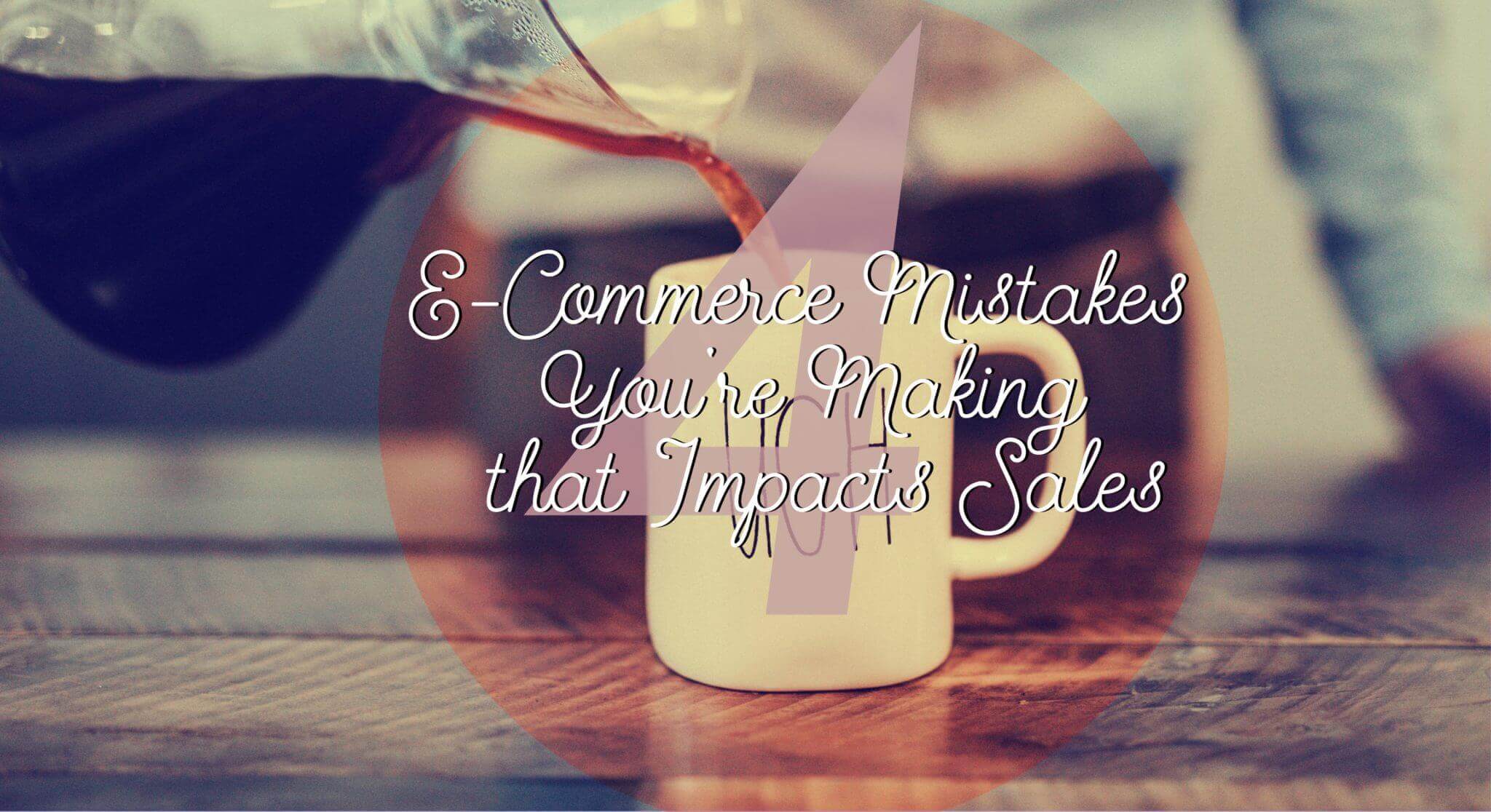
E-commerce may seem like an easy thing to do. It’s often cheaper than opening a brick and mortar store, so the appeal can be there. But, the difference between e-commerce and your local store is in the size of your competition. In your town you might have one or two other competitors, online you could have thousands. So a “build it, and they will come” concept probably won’t work.
Even if you’ve been working an e-commerce website for a while there may be some mistakes that you may be making. Here’s our list of 4 e-commerce mistakes you may be making that can have an impact on your sales.
Forgetting about SEO
SEO optimization can be extremely time consuming on an e-commerce website. So with a task that daunting, you may be relying on your sheer product volume to carry you through. For those e-commerce stores that use product feeds from other vendors you might be relying on their teams to do the optimization of images and metas for you.
Both of these would be mistakes.
First, just having a lot of products doesn’t necessarily mean you’re going to rank well for them. Good e-commerce stores spend the time getting all the data on the page as SEO friendly as possible. If you don’t have time to do everything, do your best sellers or the most profitable products. Any time that you can put in will pay dividends in the end.
Second, even if your vendor does a great job on optimizing them for you, they probably are doing the same work for all your competitors that they sell to. Now you’ve got duplicate content across the Internet as well as duplicate meta information. Take the time to make even small adjustments to these. This is especially true if you’re a newcomer or have a weaker domain than your competition.
Not Retargeting
Want to stay top of mind while someone is in the buying process? Retarget. People research dozens of websites to make decisions today. So once they leave if they forget about you, you’re not getting the sale.
No matter what site, application, YouTube video, etc. they’re on, your brand should be showing up. Additionally, if you can email those cart abandoners and non-anonymous visitors you should be. Your competition is sending them discounts and trying to lure them back onto their site, shouldn’t you?
(Best way to find that information out – go put something in a competitor’s cart. Then find out their remarketing strategy.)
Forgetting About Customers
It’s easy to pour all your effort into getting new customers. But don’t forget about those that have already fed you. Are you giving them delight content or special deals for being a customer? If you’re putting all your eggs into the new customer basket, you’re missing out customer loyalty and more importantly, brand evangelists.
Take care of those who have taken care of you. It’s cheaper to keep an existing customer than it is to get a new one.
Hiding Information
We’ve all seen it “price available in cart.” Seriously? Unless you’re not allowed to post your product’s cost because of agreements with your vendors, this is just click bait in e-commerce form. Sure, sometime when you want to get rid of a product you’ll list it below MSRP, and your manufacturer says you can’t show that cost.
But doing it for the sake of either getting carts full so you can remarket, or getting your bounce rate down, it’s just not cool. It also is bad for your sales. We’ve all been shopping online for over a decade now. Everyone has seen these kind of behaviors before. So it will turn people off who may have purchased if you’d shown them the price up front.
This also applies to shipping costs. Tell folks right up front if there will be one, what it is, and how much they have to spend to get free shipping. If you’re waiting for them to put things into a cart to find out, don’t be surprised when your cart abandonment rate is through the roof.
Conclusion
It’s really easy to make e-commerce mistakes. They’re usually big websites with lots of moving parts. The best way to get rid of them is to look at what’s not working and see if any of these are applicable. If they are, change it. Your customers, and so your sales inbox will thank you for it.
